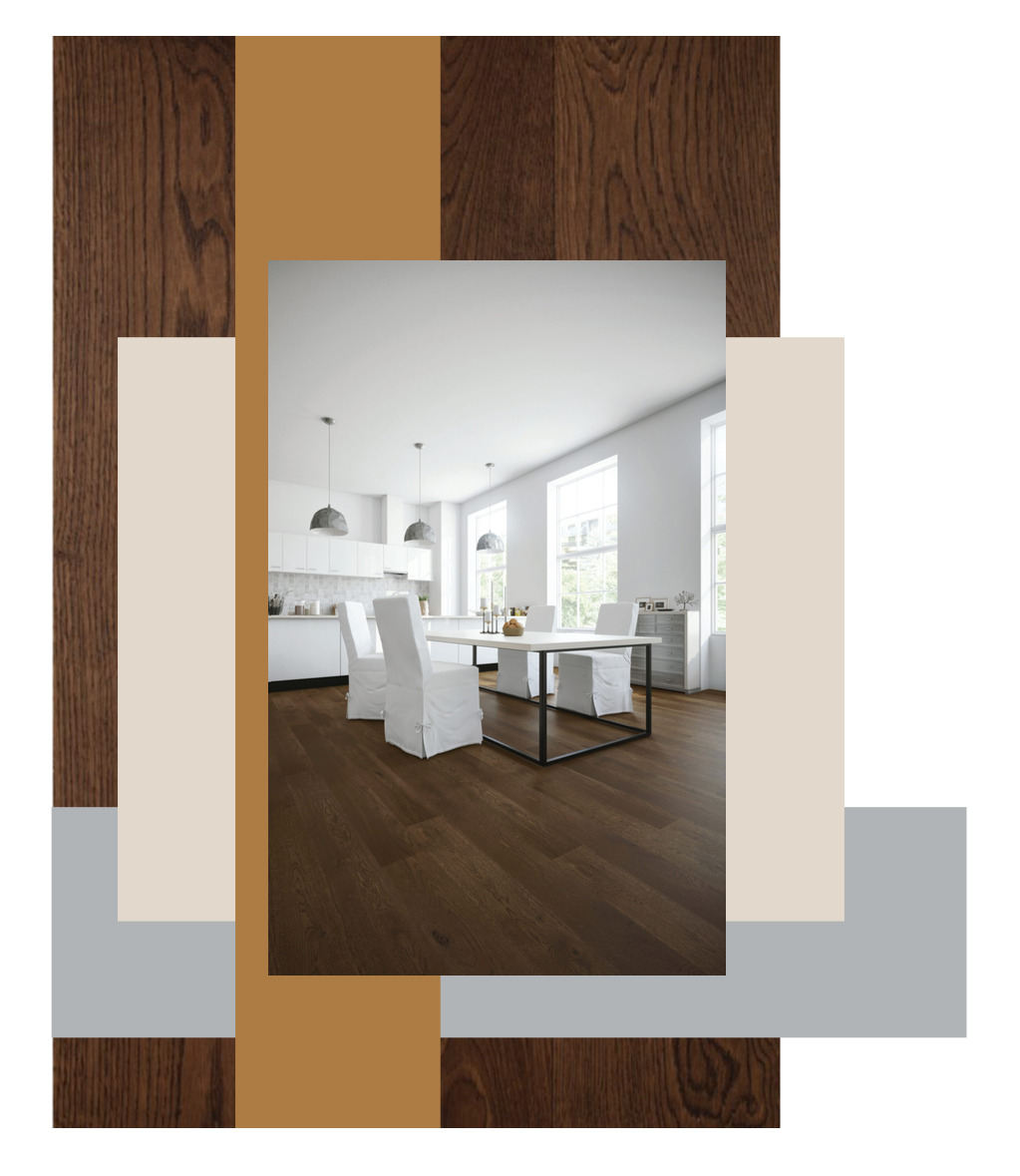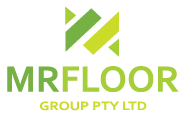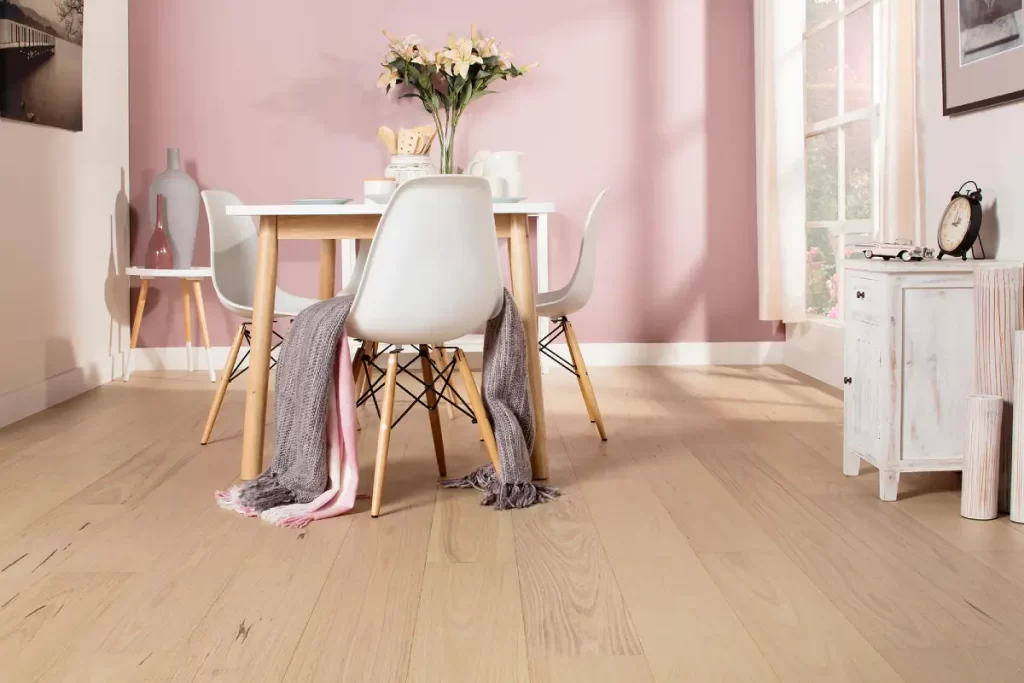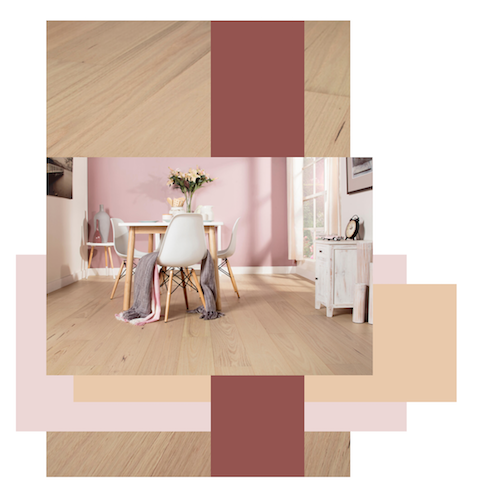
Laminate and Engineered flooring are the most popular due to their versatility and beauty. In this article, we will explain the difference to help you select the best one for you home.
Materials and Design
Engineered wood floors are made from a thin layer of hardwood on top, supported with several layers of softwood or plywood. The multiple supporting layers are hidden and give the boards support and strength, whilst the surface you walk on is pure, unadulterated solid wood. This means that engineered floors look, feel and sound just like solid wood floors, and yet a lot more versatile.
Laminate floors are made mostly from High Density Fibreboard (HDF). The boards are topped with an ultra-realistic photographic layer. The top layer is then coated and sealed in with a tough, scratch resistant surface. The photographic layer is what gives the floors its particular look. So, laminate boards appearance ranges from looks of various wood boards or even stone. This is what makes laminate floors incredibly versatile when it comes to design selection.
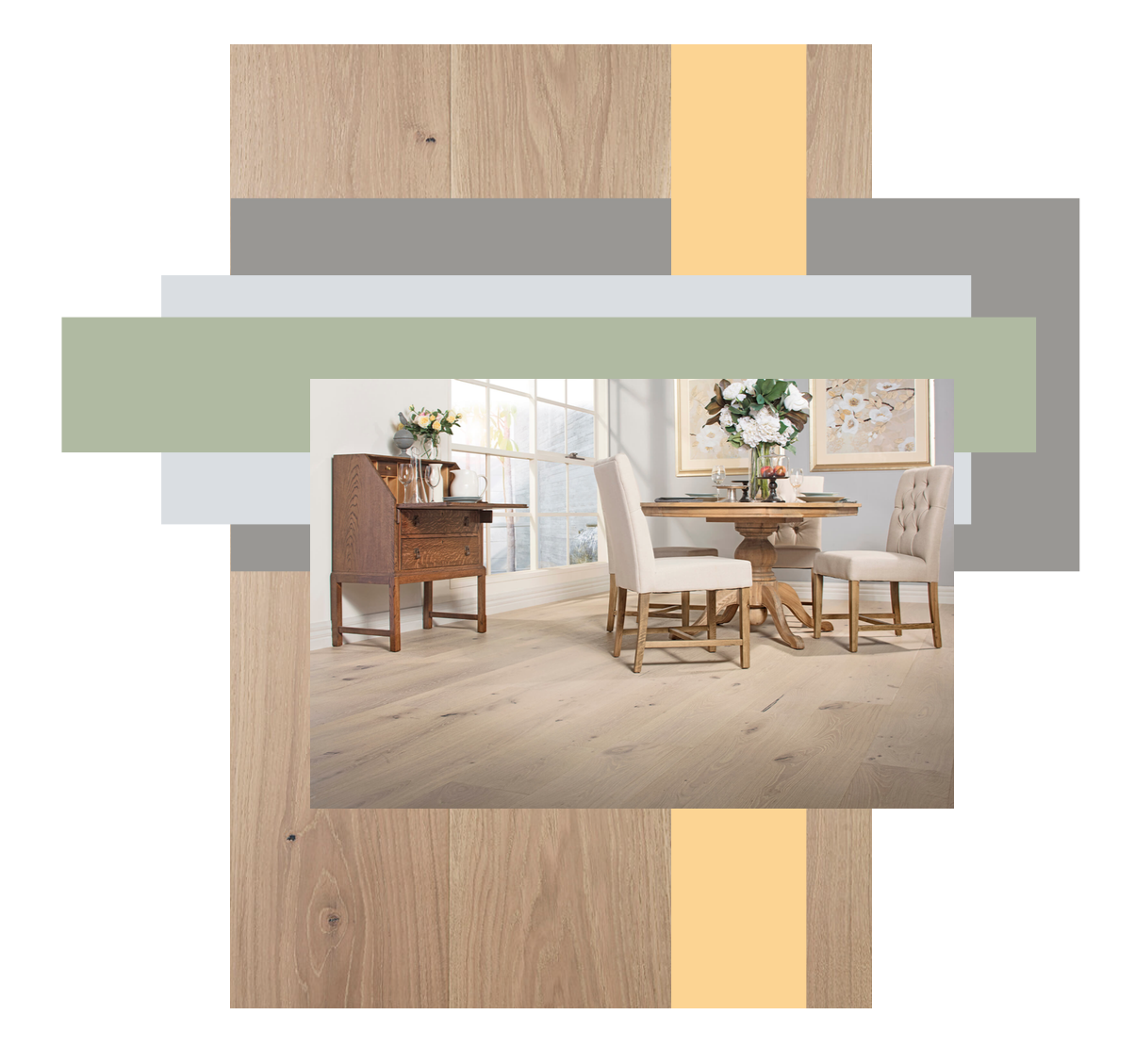
Durability
Water Resistance
Engineered floors have a surface made of natural wood which is either oiled or lacquered. Whilst these treatments help protect the wood against splashes, engineered floors aren’t considered water resistant. Because of this, engineered floors are not recommended for bathrooms or kitchens, or any space susceptible to a lot of splashes and steam.
On the other hand, laminate floors, are coated with water-resistant layer on top. Therefore, they are suitable for areas where they might get splashed, like a kitchen. However, the joints in between laminate boards aren’t waterproof, so if water is left to sit for a long time, the boards may warp. Although, you can select laminate floors which are fully waterproof, such as Quickstep Majestic, Quickstep Impressive and Quickstep Eligna. These laminate floors are suitable bathrooms, where steam and even puddles are to be expected.
Scratches
Wood is tough and long lasting, but it cans still be scratched. Engineered floors are just as resistant to scratches as any type of wood. The good news is that if scratches and dents appear over time, the surface can be sanded down and refinished. This refinishing will make the floor look as good as new.
In contrast, the tough top layer on the laminate floors is designed to resist scratches and dents. Whilst we still wouldn’t recommend dragging heavy furniture across them, the boards are certainly well equipped to deal with anything from dragging trainers to birthday party stampedes. Unlike engineered floors, there’s no way to renew the surface of a laminate floor, so if a board gets badly damaged it will have to be taken up and replaced.
Compatibility
Installation
Both engineered and laminate floors are installed with what’s called a ‘floating floor’ system. This is where the subfloor is covered by an underlay. The boards are then laid on top, clicking together for a stable, seamless surface. Whilst different floors may have slightly different systems, they all use the same basic design, which makes installation quick and easy. If you’re looking for a DIY job, both engineered and laminate floors are the perfect option.
Room Suitability
The clever design of engineered floorboards allows for real wood look in areas with significant temperature fluctuation. And therefore, engineered flooring are suitable for areas with underfloor heating, conservatories, basements and more. Remember that engineered boards are still vulnerable to water damage. So, if you used in kitchens, you should take care to prevent scratches. And we’d advise against using them in your bathroom, where steam and moisture are unavoidable.
Laminate floors are just as resistant to heat and slightly more water resistant. Kitchens shouldn’t be a problem for any of our laminate floors. Yet we recommend not to leave puddles sitting on the surface, which can eventually seep into the gaps between the boards. Laminate boards may be water resistant, but they’re not waterproof, so we wouldn’t recommend using them in bathrooms neither. Unless, of course, you use one of Quickstep’s waterproof laminate floors, such as the Impressive and Majestic range.
